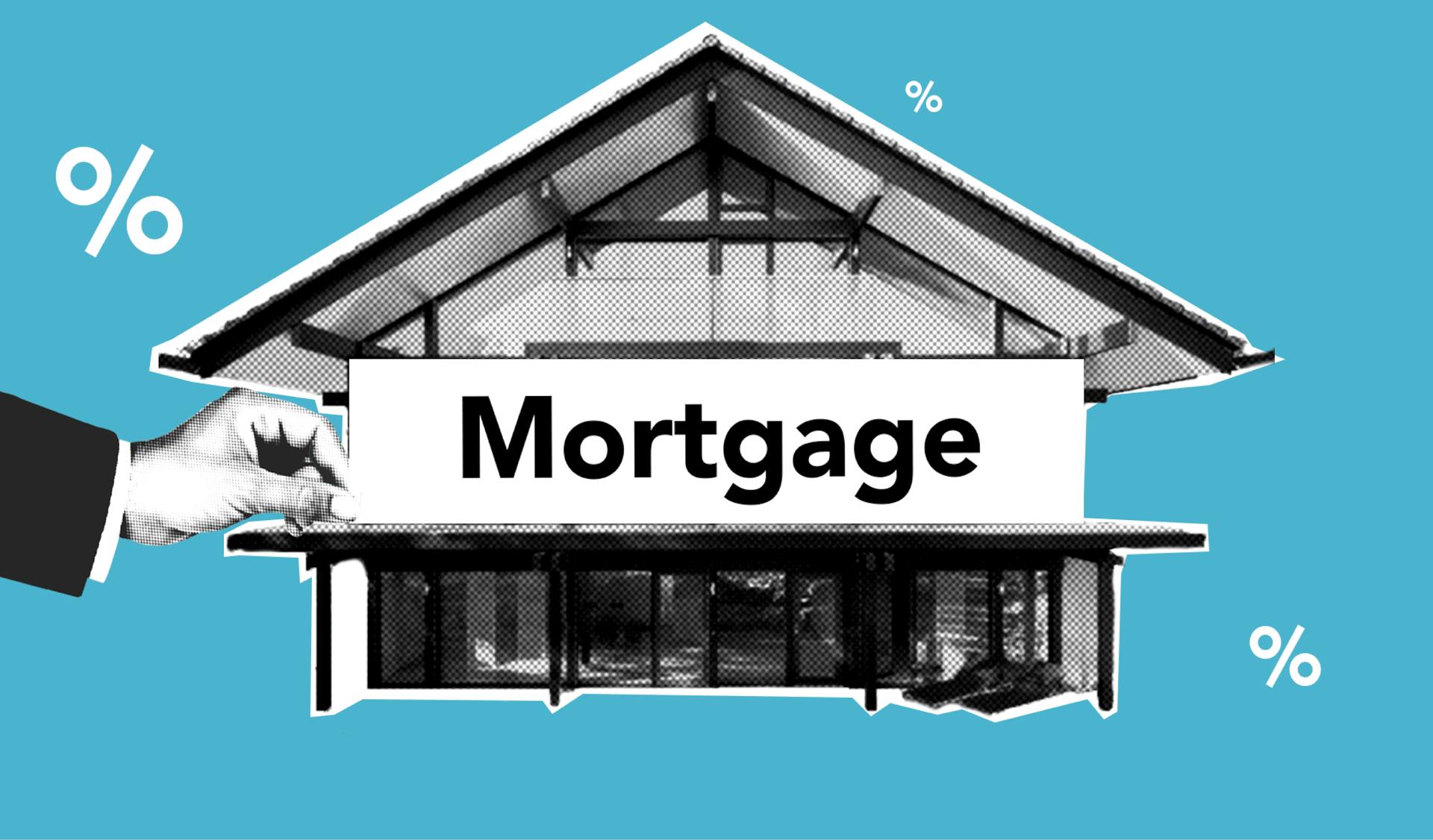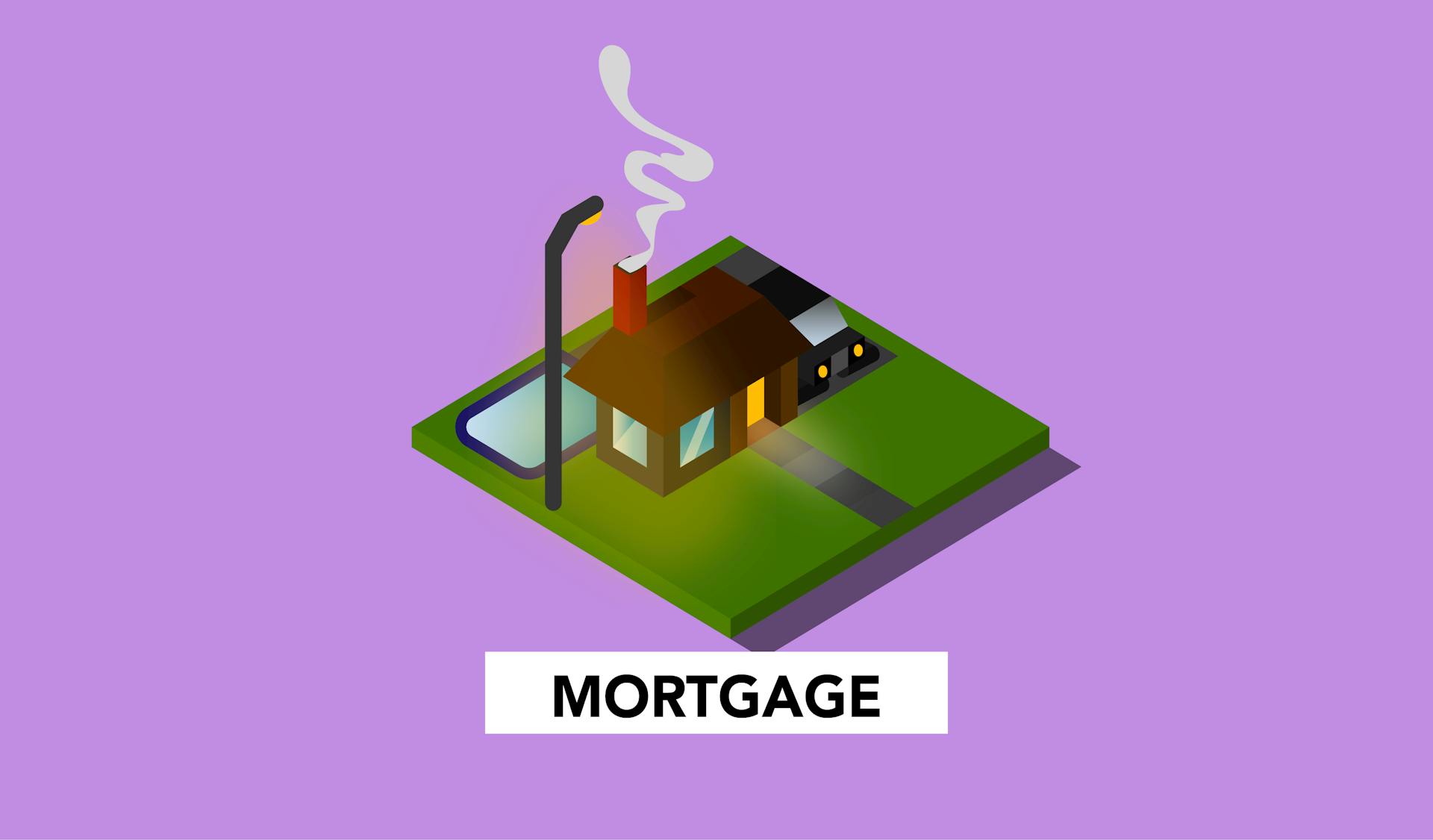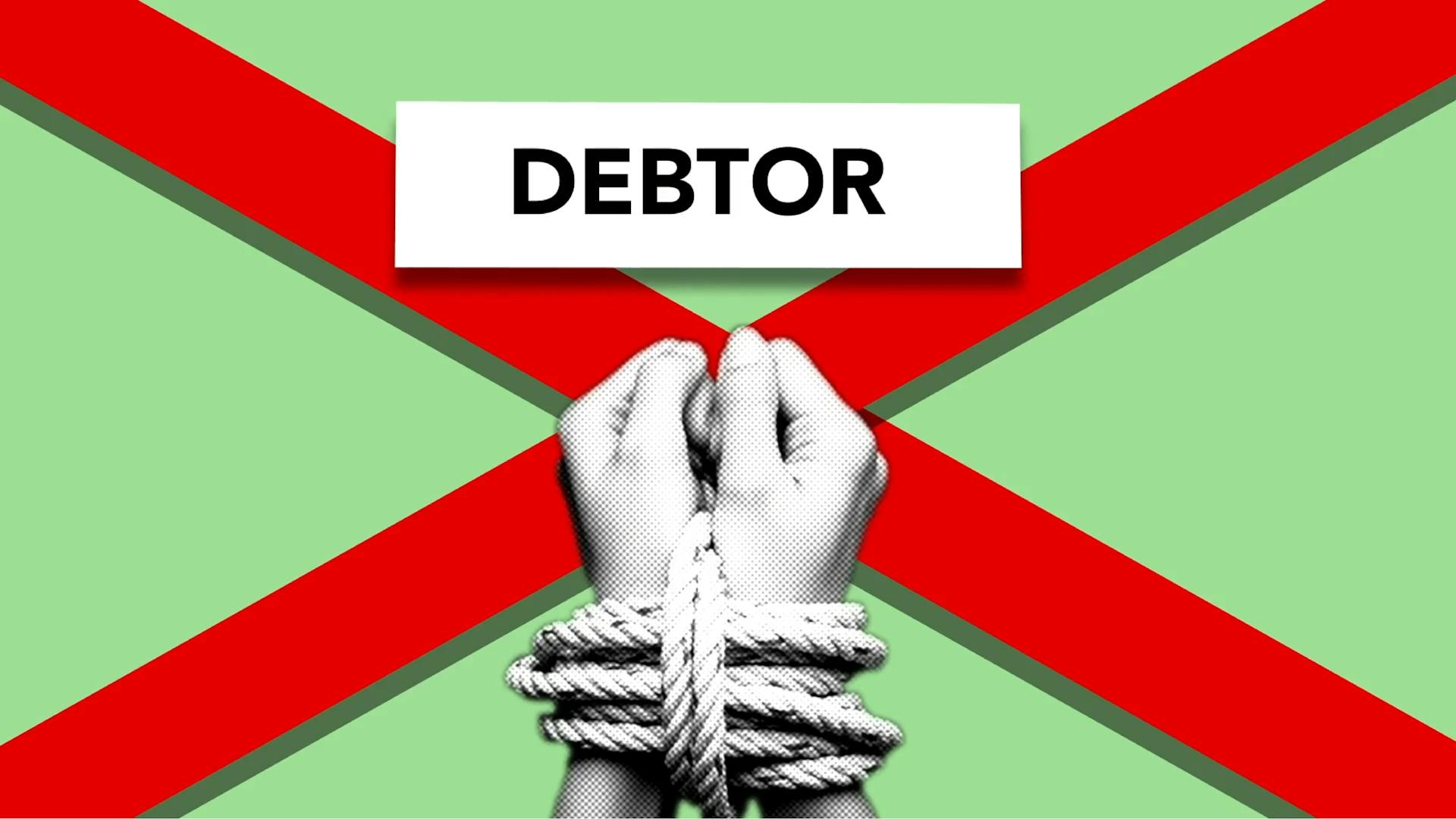
Zombie second mortgages can be a nightmare for homeowners. In some states, a second mortgage can remain valid even if the primary mortgage is paid off or foreclosed.
Homeowners can be liable for the second mortgage even after the primary mortgage is paid off. This is because some states don't require a second mortgage to be released when the primary mortgage is satisfied.
In many cases, homeowners are unaware of the second mortgage until they try to sell their home or refinance their primary mortgage. This can lead to costly surprises and delays in the selling or refinancing process.
Foreclosure Process and Targets
The parties foreclosing on zombie second mortgages are a mix of players, with the original lenders seldom still in the picture. Debt buyers or their collection agents often take over, purchasing pools of defaulted loan accounts and opportunistically selecting which ones to foreclose.
These debt buyers typically focus on equity-rich properties and those where they can easily pay off the first mortgage to obtain unencumbered title for themselves.
At the foreclosure sale of a second mortgage, the buyer acquires only the borrower's right to redeem the property from the first mortgage, not unencumbered title to the property.
Recommended read: 1st Mortgage vs 2nd Mortgage
Home Foreclosures (2023)
Homeowners who struggle to keep up with their mortgage payments may find themselves facing foreclosure, but did you know that second mortgages can become dormant? In fact, many homeowners thought that when their first mortgages were modified, second mortgages were covered as well.
The Great Recession led to a sharp decline in home values, making it difficult for homeowners to make payments on second mortgages. As a result, second mortgage owners often wrote off these loans as uncollectible, but this didn't necessarily mean the debt was forgiven. In most cases, the loan owners retained the option to demand payment again.
The accounting device used to reflect these write-offs is called an IRS Form 1099-C, which is discussed in NCLC's Collection Actions § 5.2.7.3. Borrowers often didn't understand that this didn't mean they were no longer responsible for repaying the debt.
If a second mortgage has been inactive for many years, the owner may be barred from foreclosing due to the doctrine of laches. This doctrine requires the creditor to have knowledge of the cause of action, an unreasonable delay in commencing the action, and harm resulting from the delay. In some cases, foreclosure can be barred even when the statute of limitations to foreclose has not expired, see NCLC's Home Foreclosures § 12.8.2.
Discover more: I Can't Afford My Car Lease Payments Anymore

Homeowners who believed their loans had been written off or modified and couldn't communicate with anyone about the loan for years may have foregone timely options to address the loan default. This can lead to harm when years of delay have led to the disappearance of evidence needed to defend against a foreclosure, see NCLC's Home Foreclosures § 12.8.4.
In some cases, homeowners may be able to use state law claims of abandonment and laches to defend against a foreclosure. This can be effective in opposing foreclosure of a zombie second mortgage.
Recommended read: Haven't Paid Second Mortgage in 10 Years
Foreclosure Targets
The party foreclosing on a second mortgage is often a debt buyer or their collection agent, not the original lender. These debt buyers purchase pools of defaulted loan accounts and opportunistically select which ones to foreclose on.
Debt buyers can focus on equity-rich properties or those where they can easily pay off the first mortgage to obtain unencumbered title for themselves. This can give them powerful leverage over homeowners.
Expand your knowledge: Assumable Mortgages Can Help Buyers Get Sub-4 Mortgage Rates

The party foreclosing must have authority to enforce the underlying contractual documents, the note and mortgage. Debt buyers may not have systems in place to document transfers of negotiable notes and account histories.
A request for information (RFI) under RESPA can help build a successful challenge to a party's authority to foreclose a second mortgage. Sample RFI letters are available for second mortgages.
Homeowners can fight back against zombie second mortgage foreclosures by challenging the authority of the party foreclosing. They can also use legal defenses and claims to protect themselves in court.
The foreclosure process for second mortgages is different from first mortgages. At the foreclosure sale of a second mortgage, the buyer acquires only the borrower's right to redeem the property from the first mortgage, not unencumbered title.
The foreclosure of a second mortgage means that the borrower's right to redeem the property by paying off all the mortgage debts is extinguished. This can give the second mortgage debt buyer and its debt collector powerful leverage over homeowners.
You might enjoy: Can a Second Mortgage Foreclose before the First
Fair Debt Collection Practices Act

The Fair Debt Collection Practices Act (FDCPA) is a law that prohibits unfair or deceptive debt collection activities. It's a powerful tool for homeowners fighting zombie second mortgage foreclosures.
The FDCPA prohibits collecting a sum that is not lawfully owed or enforcing a security interest when there is not a present right to do so. This means that if a lender or debt collector is trying to collect on a zombie mortgage that has been charged off or is no longer valid, they could be violating the FDCPA.
Homeowners who are facing zombie mortgage debt can recover statutory penalties, damages, and attorney fees if they can prove an FDCPA violation. The FDCPA also applies to owners of zombie second mortgages and their attorneys, as well as servicers of zombie second mortgages.
In 2023, the CFPB published guidance on the applicability of the FDCPA to certain debt collection practices involving zombie second mortgage debt. This guidance is discussed in NCLC's Home Foreclosures § 12.4.4a.
Debt collectors, including those collecting zombie mortgages, must follow the FDCPA's rules or face consequences. This includes avoiding deceptive or unfair practices, such as collecting on debts that are not lawfully owed.
See what others are reading: What Not to Do When Applying for a Mortgage?
Defenses and Claims

Zombie second mortgages can be a nightmare, but there are defenses and claims that homeowners can use to fight back. Borrowers have strong arguments that the practice of lying in wait while systematically failing to communicate before a foreclosure meets both the "unfair" and "deceptive" standard under the state UDAP statutes.
Homeowners can also challenge the authority to foreclose a second mortgage. The party foreclosing a second mortgage must have authority to enforce the underlying contractual documents, the note and mortgage. A request for information (RFI) under RESPA regarding loan ownership and possession of the relevant contract documents can build a successful challenge to a party's authority to foreclose a second mortgage.
Equitable defenses such as laches may also be available when the owner of a zombie mortgage seeks to foreclose after the account has remained inactive for many years. The foreclosure may be barred under the doctrines of unclean hands or laches.
Additional reading: Zombie Bank
Contract Claims and Defenses

Contract claims and defenses can be a powerful tool for homeowners fighting foreclosure. Standard loan documents contain terms that obligate lenders to comply with applicable federal and state laws if they wish to foreclose.
Borrowers can use these contractual conditions to their advantage, avoiding potential TILA or RESPA statute of limitations defenses and disputes over who is a proper party defendant. This is because framing these obligations as contractual conditions to a foreclosure can provide a clear and concise argument for the borrower.
A key example of this is the case of HELOC loans, which can present several distinct legal issues. For instance, because a HELOC does not establish a fixed debt obligation at loan origination, most courts do not consider HELOCs to be negotiable instruments.
This can complicate a foreclosing party's burden to establish that it has authority to foreclose, and may require the party to document the chain of past transfers of the loan documents. This heightened evidentiary burden can be a significant obstacle for lenders, especially when dealing with non-negotiable notes.
A unique perspective: Second Home Mortgage Lenders

In some jurisdictions, the limitation period to enforce a non-negotiable note may be shorter than the period for a negotiable note, which can further complicate the lender's case. Additionally, certain obligations under statutes such as TILA and RESPA do not apply to open-end credit transactions, such as HELOCs.
As a result, borrowers may be able to raise contract-based claims and defenses to challenge a foreclosure, potentially avoiding the need for a lengthy and costly court battle. By understanding the contractual conditions and obligations that govern their loan, homeowners can take a proactive approach to defending their property and their rights.
Equitable Defenses to Foreclosures
The doctrine of laches can bar a foreclosure even when the statute of limitations has not expired, as long as the creditor had knowledge of the cause of action, delayed unreasonably, and caused harm to the borrower.
The elements of laches under typical state law are: the creditor's knowledge of the cause of action, an unreasonable delay in commencing the action, and harm resulting from the unreasonable delay.

Borrowers who believed their loans had been written off or modified and could not communicate with anyone about the loan for years may have foregone timely options to address the loan default.
The doctrine of unclean hands can also be used as an equitable defense to foreclosure, but it's not as commonly used as laches.
Borrowers can be harmed when years of delay have led to the disappearance of evidence needed to defend against a foreclosure.
The court may consider the creditor's actions, or lack thereof, when determining whether to grant equitable relief.
State Laws and Regulations
State laws and regulations play a crucial role in dealing with zombie second mortgages. Thirteen states have enacted statutes specifically designed to regulate second mortgages, limiting default-related charges and setting guidelines for loan origination. Violation of these origination laws can give rise to recoupment claims against debt buyers.
In some states, the statute of limitations for foreclosure can be a powerful defense. The statute of limitations can bar foreclosure and even extinguish the mortgage as an encumbrance on the property. This can be a significant advantage for homeowners dealing with zombie second mortgages.
Expand your knowledge: Commercial Mortgages

The statute of limitations varies by state, but in many jurisdictions, it is equivalent to the limitation period for enforcing negotiable notes and other written contracts – typically six years. Some states have longer limitation periods, ranging from ten to thirty years, while others do not recognize any statute of limitations for foreclosure of mortgages or deeds of trust.
Here are the states that have enacted statutes to regulate second mortgages:
- These states have specific laws regulating second mortgages, including limits on default-related charges and guidelines for loan origination.
- More detail on individual state statutes of limitations for foreclosures is discussed in NCLC's Home Foreclosures § 5.3.1.
Statute of Limitations
The statute of limitations can be a powerful defense against foreclosure of a second mortgage. In many states, the expiration of the statute of limitations not only bars foreclosure, but also extinguishes the mortgage as an encumbrance on the property.
Typically, the statute of limitations for foreclosures is equivalent to the limitation period for enforcement of negotiable notes and other written contracts, which is usually six years. However, some states look to limitation periods for asserting rights in real property, which can be considerably longer, ranging from ten to thirty years.
The key is to determine the statute of limitations in your state, and to understand when it begins to run. In most states, the statute of limitations starts to run from the due date of each unpaid installment, or from the date the loan owner accelerates the loan.

Here are the three potential trigger events to consider in determining when the statute of limitations begins to run:
- The due date of each unpaid installment
- A loan owner's acceleration of the loan
- The loan's reaching its contractual maturity date for payment of the entire debt
It's essential to examine your state laws to determine the applicable statute of limitations for foreclosures, as the laws can vary significantly from state to state.
State Laws Regulating
Thirteen states have enacted statutes specifically designed to regulate second mortgages. These statutes limit default-related charges, set guidelines for second mortgage loan origination, and require special licensing.
Some states take a stricter approach to regulating second mortgages, setting guidelines for loan origination and requiring special licensing. This can provide borrowers with additional protections and recourse in case of a foreclosure.
Violating these origination laws can give rise to recoupment claims against debt buyers, providing borrowers with another avenue for seeking relief. Borrowers should be aware of these state laws and regulations to protect their rights.
State anti-deficiency statutes can also protect borrowers from post-foreclosure deficiency claims on junior mortgages. This means that borrowers may not be held liable for the remaining balance on a second mortgage after the senior mortgage has been foreclosed.
For more insights, see: Second Mortgages Advantages and Disadvantages
Bankruptcy and Loss Mitigation

Bankruptcy can offer a reprieve from foreclosure activity through the automatic stay, giving homeowners time to explore options.
Chapter 13 bankruptcy allows homeowners to object to a second mortgagee's claim and challenge amounts owed, even if a statute of limitations bars some of the creditor's claim.
Recoupment is available despite statutes of limitations on a homeowner's affirmative claims against the creditor.
In a chapter 13 case, a homeowner can "strip off" a junior mortgage if the first lien mortgage and other senior encumbrances exceed the property's value, making the loan balance a dischargeable unsecured debt.
Loss mitigation options, such as forbearance, can be applied to all federally backed mortgages, regardless of their lien position.
Worth a look: Bankruptcy Payday Loan
Why Are They Coming Back to Life Now?
Zombie second mortgages are coming back to life because of a significant increase in home values over the past several years. Many homes that were underwater in 2010 are now worth more than they were then.
Homeowners have also worked to pay down their first mortgages, which has further increased their home equity. This makes their homes more attractive targets for lenders.
The economic reason behind the resurgence of zombie second mortgages is simple: there's now home equity for them to feed on.
Bankruptcy Remedies Applicable

Filing for bankruptcy under chapter 13 can provide a reprieve from foreclosure activity through the automatic stay.
This automatic stay temporarily stops foreclosure proceedings, giving homeowners a much-needed breathing space.
In a chapter 13 case, homeowners can object to a second mortgagee's claim, challenging amounts owed if a statute of limitations bars all or some of the creditor's claim.
This can be a powerful tool for homeowners who are struggling to pay off their debts.
Recoupment is also available despite statutes of limitations on a homeowner's affirmative claims against the creditor.
This means that even if the statute of limitations has expired, homeowners can still recover money owed to them by the creditor.
When the first lien mortgage and other senior encumbrances exceed the property's value, homeowners can "strip off" the junior mortgage in a chapter 13 case, making the loan balance a dischargeable unsecured debt.
Take a look at this: Does a Reverse Mortgage Pay off Your Existing Mortgage
Loss Mitigation Options
Loss Mitigation Options can be a game-changer for homeowners facing financial difficulties.
The major federal guarantors and insurers of mortgage loans have created loss mitigation options that can help preserve homeownership.
Some loss mitigation options, like modification programs, are only available for first mortgages, but many forbearance options apply to all federally backed mortgages regardless of their lien position.
Homeowners should be aware that certain options may not be available for junior mortgages, but others may still provide relief.
NCLC’s Home Foreclosures § 12.5 outlines the major servicing options that cover junior mortgages, offering a roadmap for those in need.
Loss mitigation options can provide temporary or permanent relief from mortgage payments, helping homeowners stay in their homes.
Forbearance options, which can be applied to all federally backed mortgages, may offer a temporary reduction or suspension of mortgage payments.
Homeowners should seek professional help to navigate the complex process of loss mitigation and ensure they take advantage of available options.
By understanding loss mitigation options, homeowners can take proactive steps to avoid foreclosure and preserve their financial well-being.
Intriguing read: Is Debt Relief a Good Idea
Resolving Financial Issues

Bankruptcy and loss mitigation can be complex and overwhelming, but there are steps you can take to resolve financial issues related to your mortgage. You can challenge a second mortgagee's claim in bankruptcy, which can be a powerful tool if the statute of limitations bars all or some of the creditor's claim.
If you're dealing with a zombie mortgage, don't panic or ignore the notice. You can start by contacting the servicing department to see if the second mortgage was settled, but be aware that the ownership of the debt can be difficult to track.
Analyzing the loan documents can also be helpful. Look for the original note and see if the lender is complying with the terms of and the interest rate promised. Sometimes, the lender may have charged more interest than they should have been charging.
You can also check with your county recorder's office to see if the mortgage was officially discharged. Additionally, if the property tied to the mortgage was foreclosed, review the settlement to see if it includes mention of a second mortgage.
For more insights, see: Deduct Mortgage Interest on Second Home

If you're unsure about how to proceed, consider reaching out to a HUD housing counselor or working with an attorney who specializes in real estate and mortgage law, ideally one with experience in zombie mortgages.
Here are some steps to take if you receive a notice stating you owe money on a zombie mortgage:
- Contact the servicing department to see if the second mortgage was settled.
- Analyze the loan documents to see if the lender is complying with the terms of and the interest rate promised.
- Check with your county recorder's office to see if the mortgage was officially discharged.
- Review the settlement of any foreclosure to see if it includes mention of a second mortgage.
- Reach out to a HUD housing counselor or an attorney who specializes in real estate and mortgage law.
Frequently Asked Questions
What are zombie second mortgages?
Zombie second mortgages are old, unpaid home loans that were thought to be dead, but can come back to haunt homeowners when collectors or lenders try to collect or foreclose. They can be a surprise financial burden for homeowners who thought they had paid off their debt.
What happens when a 2nd mortgage forecloses?
When a second mortgage forecloses, the first mortgage remains in place, and the new owner must continue making payments on it to avoid further foreclosure
Are 2nd mortgages a good idea?
Second mortgages can be a good idea if used to eliminate high-interest debt or improve your credit score, but it's essential to consider your financial needs and goals before taking on additional debt
Sources
- https://library.nclc.org/article/15-ways-fight-foreclosure-zombie-second-mortgages
- https://www.kellyguzzo.com/kelly-guzzo-fights-for-consumers-against-zombie-second-mortgages/
- https://www.bankrate.com/mortgages/zombie-mortgage/
- https://www.metrickesq.com/zombie-second-mortgages/
- https://library.nclc.org/zombie-second-mortgages
Featured Images: pexels.com